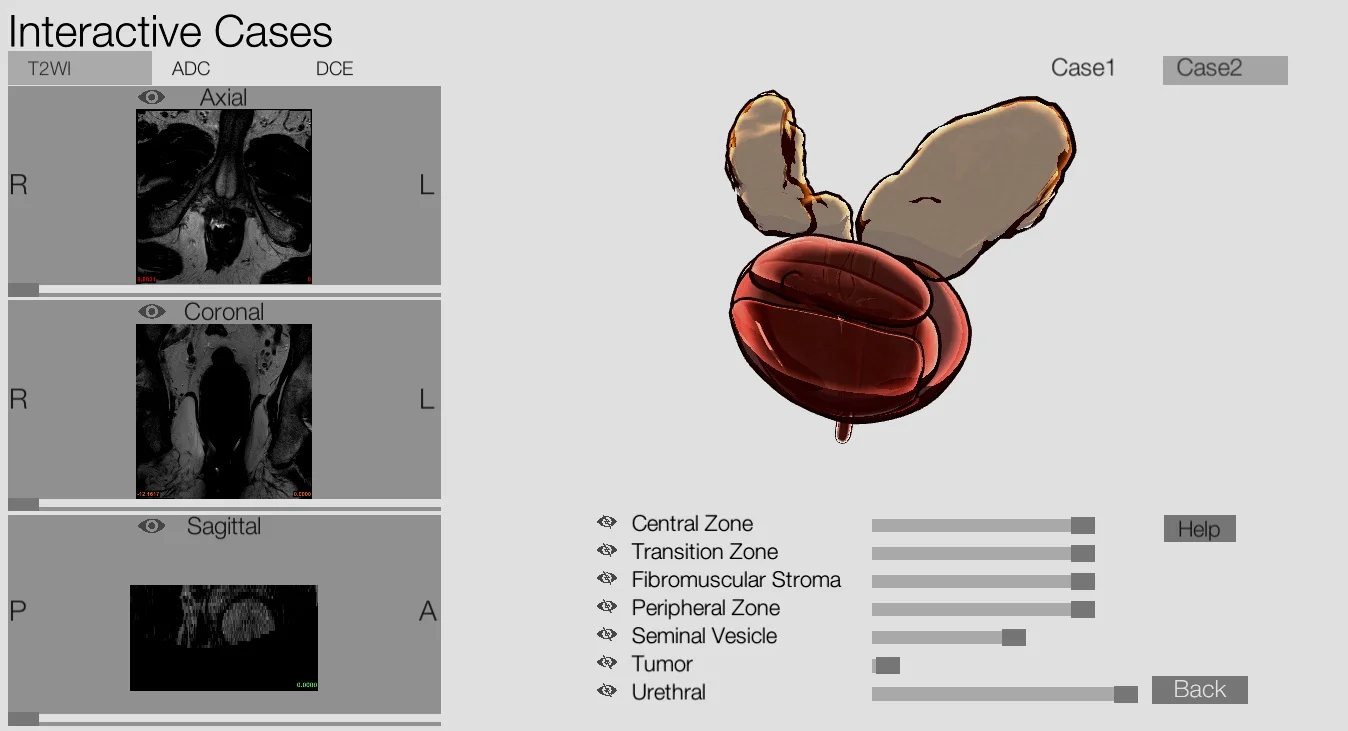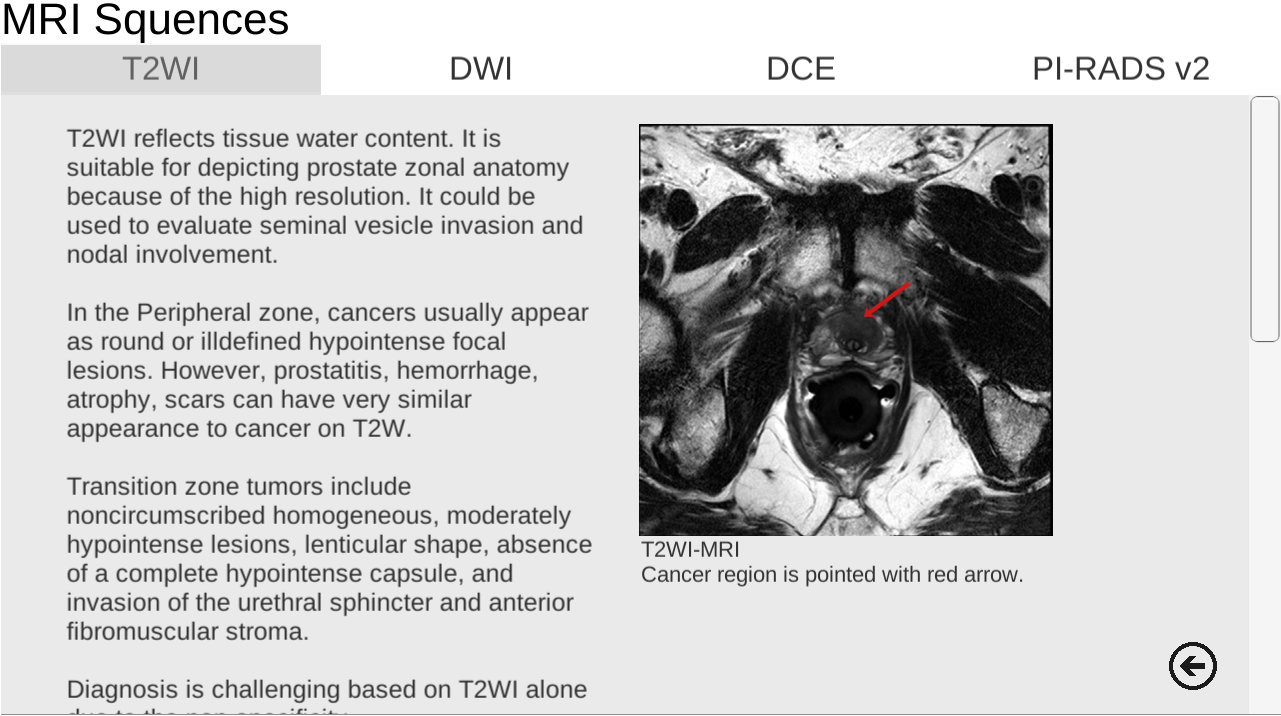Exploration of Illustrative Components in a 3D Interactive Program for Radiological Prostate Cancer Education
Project Concept
Multiparametric magnetic resonance imaging (mp-MRI) has been increasingly used for radiologists in the diagnosis of prostate cancer. This diagnosing process requires a certain level of spatial ability and is challenging for inexperienced radiologists to learn. There is a great need for effective radiology education since MRIs are increasingly being used in formulating a diagnosis.
Working with experienced radiologist Dr.Oto from the University of Chicago Medicine, this study will develop a web-based 3D interactive program that combines 3D models, corresponding MRI data, and illustrated components to help radiologists learn about the mp-MRI approach in diagnosing prostate cancer.
A set of schematic prostate models were included in the zonal anatomy section. Schematic prostate models were created to teach zonal anatomy as a part of pre-training. Simple, low-polygon count 3D geometries were used to represent complex and rather confusing zonal anatomy of the prostate.
The MRI sequences section includes brief introductions of three different sequences used in diagnosing prostate cancer and Prostate Imaging-Reporting and Data System. Users could click on buttons to switch between the 4 subsections to be familiar with sequences used in diagnosis.
The interactive was coded with the support of Lean Touch assets so that users would be able to rotate and zoom the 3D prostate models along with the MR images using a mouse or touch screen. The accessibility is important for web-based interactive aiming for both desktop and mobile users. For each part of the prostate model, a slider and a button were assigned to change the opacity and turn on and off the model.
This research study also explores better ways to render 3D interactive models in real time and test the effect of illustrative visualization in mimicking illustration styles. The exploration and comparison between rendering styles could result in better ways or standards to visualize 3D data sets for educational purposes.









